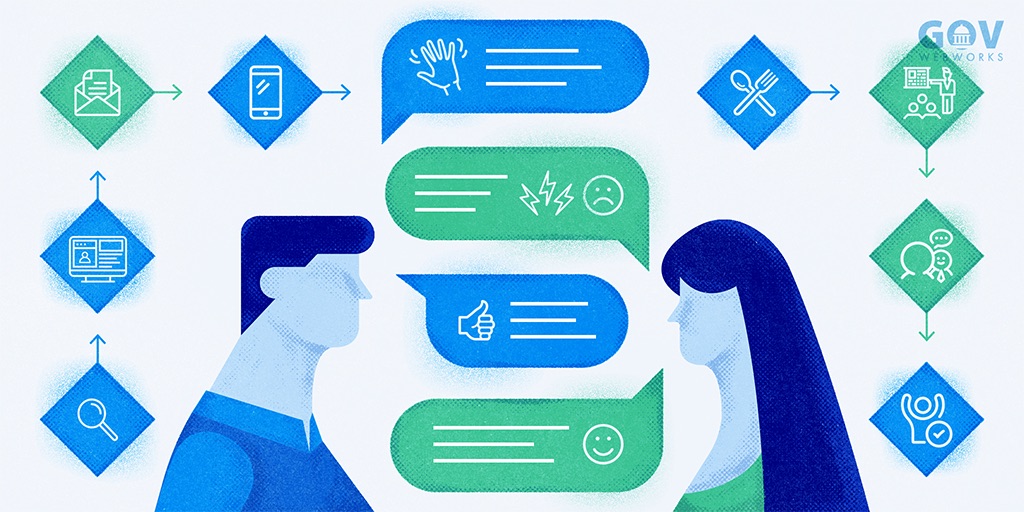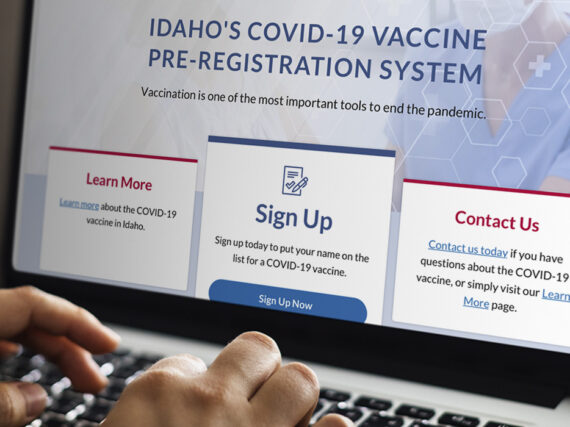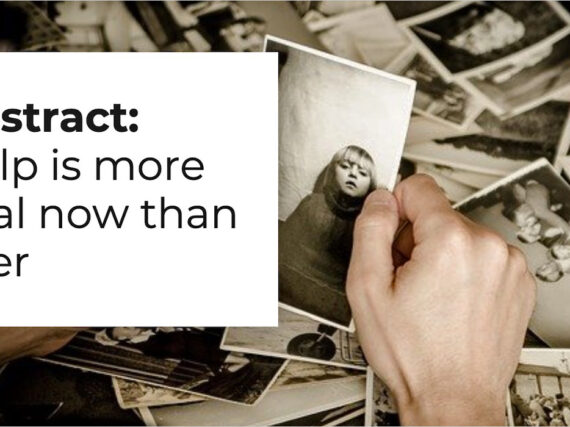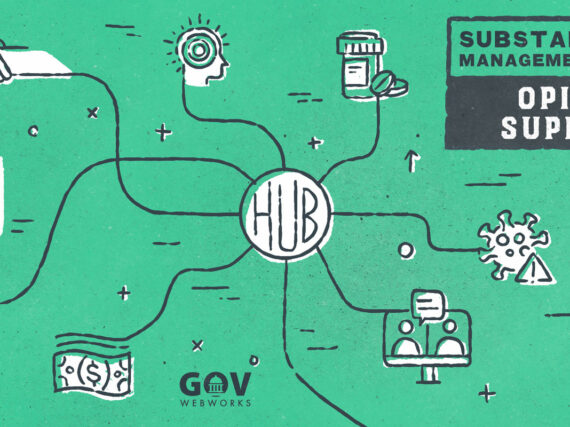What would you do if you had so much physical pain you could no longer work? Such was the case for Anita* who had to apply for food stamps to make ends meet. As a result of the pain and demoralization of losing her job, her confidence suffered as well. She wanted to be able to work, she just didn’t know how to overcome the obstacles.
One of the rewards of developing tools for health and human service agencies is that these digital applications actually help people. For example, our client, Idaho’s Employment & Training (E&T) program, assists citizens enrolled in SNAP (food stamps), like Anita, and TAFI (cash assistance) to find meaningful work.
Career coaches from MAXIMUS, a private case management company, guide participants to get and hold a job. To this end, they provide assistance vouchers, as well as interview preparation and coaching. The Employment and Training System (ETS) tool developed by GovWebworks for IDHW enables MAXIMUS career coaches to track the progress of each participant.
Since GovWebworks doesn’t interact directly with the people using the tools, we asked MAXIMUS for some examples of how the platform helps people. The following is one successful outcome detailed by a participant in the E&T program. We’ll be publishing more stories in the future as part of our E&T coverage.
*Names have been changed for privacy.
Anita’s hesitant beginning
Back to Anita*. In December of 2017, she received a letter in the mail saying she was required to join the E&T program in order to continue receiving monthly SNAP assistance. When she first spoke with her case worker, Paul*, over the phone, she said that she was badly needing help, but didn’t know where or how to get it.
For more than a year, Anita said she’d been experiencing widespread pain in her body that was hard to diagnose. She had tried a doctor, chiropractors, a physical therapist, a massage therapist, and a specialist in myofascial massage. Each visit helped a little, and her pain was decreasing over time, but she had not been able to work and was suffering from low self esteem as a result.
Anita was a Personal Fitness Trainer by trade, but the pain made it difficult to work more than a few hours a week. She felt she was normally a fun, bubbly woman with a strong work ethic, but her personality had been dulled by the overwhelming pain and lack of confidence she was experiencing. She told Paul that she couldn’t stand or sit for long periods of time and didn’t know what job she could do.
Paul detailed the classes, training, and extra help that E&T could provide. After initial hesitance, Anita admitted to being excited to make use of the services and relieved to have some support and guidance in finding a new job.
Progress with Paul
When Anita attended classes offered by E&T and met Paul in person, she felt supported and welcomed. Paul emphasized the fact that she was valuable in the workplace and as a person. He also said he thought Anita would easily find a job because of her qualities. He encouraged her to stay positive.
Anita found it challenging to search for jobs because of her needs, and it hurt to sit and stand in the computer lab. None-the-less, she came each day to meet her 20 hours a week so she could continue to receive SNAP assistance. The added benefit was that in Paul she had found someone who believed in her when she couldn’t see where she was going. Whether she was having a good or bad day of pain, she felt Paul was rooting for her and often provided a laugh to get her through. Paul was also prompt in responding to Anita’s voucher requests, emails, and phone calls.
When Anita was asked back for a second interview at a restaurant in town, she was so nervous she didn’t want to go. She hoped to talk to Paul for five minutes, but he made the time to coach her for the interview. He helped her finalize questions to ask and go over her previous interview so she felt more prepared. They also joked for a bit which greatly improved Anita’s stress level and mood before the interview.
Successful outcome
Anita went into the interview prepared, and contacted Paul to say she got the job. Paul congratulated her and asked her to come back and tell him how the interview went. She said she felt it went well and the work would be fun and exciting. It also fit with her schedule and physical needs. She was proud to have put in the effort to get the position. Anita attributed the support of the staff at MAXIMUS and E&T to her success.
“Paul has made an enormous difference in my life,” Anita wrote in her testimonial. “He has a gift for seeing in people what they cannot always see in themselves, and he vocalizes it and encourages them. Just knowing he cared made a difference. It took me off-guard a few times because even though I desired someone to notice me, not many did. He saw the hill I was climbing and cheered me on the whole way.”
“Paul is professional in his approach, but his joking and light-hearted manner gave me a mental break before going back to work. He talked to me as an equal, as the confident and skilled woman I am seeing myself as now, before I believed that girl was still in me.”
How ETS helps
Anita is one of many people with unique situations who are assisted by MAXIMUS and E&T every day. Their details are recorded in the ETS application so Idaho can track and monitor the success of the E&T program.
The ETS interface helps a case worker, like Paul, to asses Anita’s skills, interests, and career paths. Records can be flagged and characterized based on needs to support later reporting on specific datasets by E&T.
The planning aspects of the system enable Paul to collaboratively map a rational way forward for Anita, in accordance with regulations and the standard practices for each program. A plan may encompass a combination of practical steps such as, in Anita’s case, skills evaluation, resume preparation and submission, and interview coaching.
The system also enables Paul to generate and issue reimbursement vouchers. These might help Anita to buy books, or job-related apparel for her physical issues, and other resources to assist in securing employment.
Finally, the ETS system is designed to track five key outcomes, including job acquisition, job retention, job promotion (raises), and added credentials such as GED, professional certification, and enrollment in higher education. It also tracks completion of planned tasks.
All this can seem like a lot of red tape, until you read stories like Anita’s that give the process a human face. Through a combination of great coaching and the methodical approach supported by ETS, people’s lives can change for the better. We’re glad to play a small part in the process.
Learn more
- Contact us for more information on how we can help
- Employment and Training System Case Study
- MAXIMUS | Helping Government Serve The People







